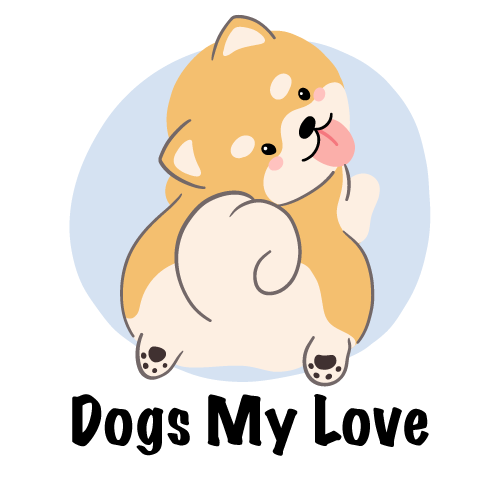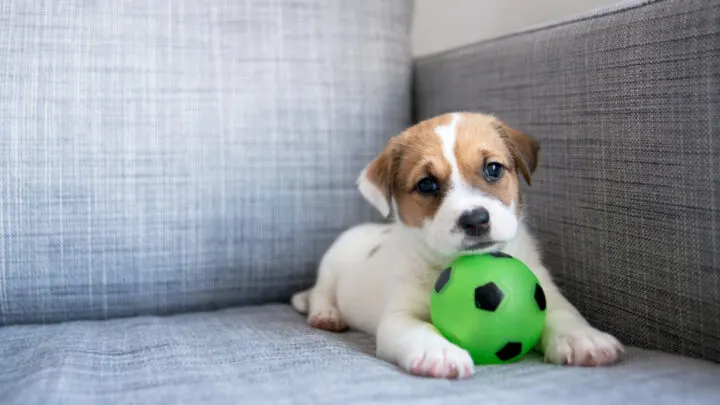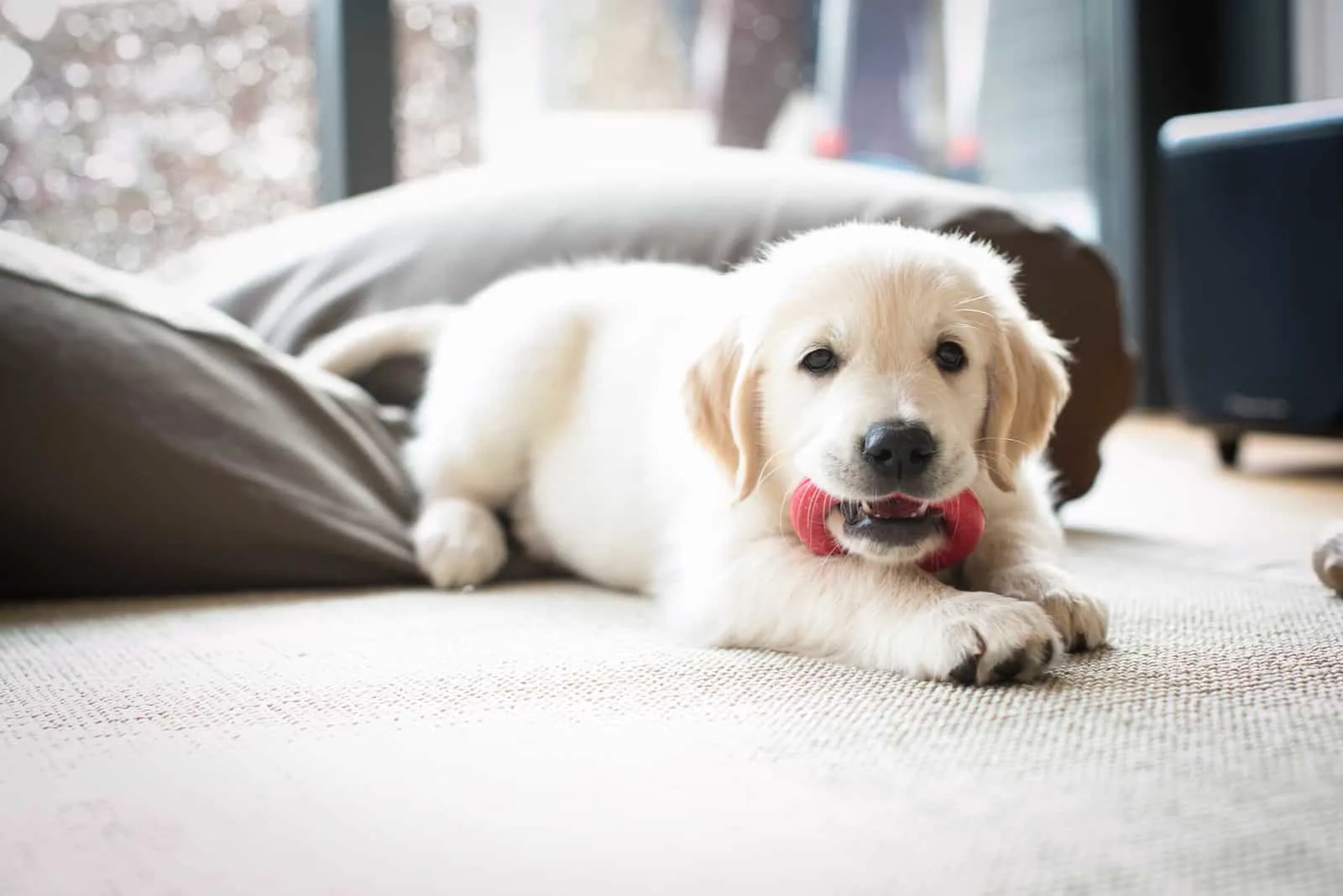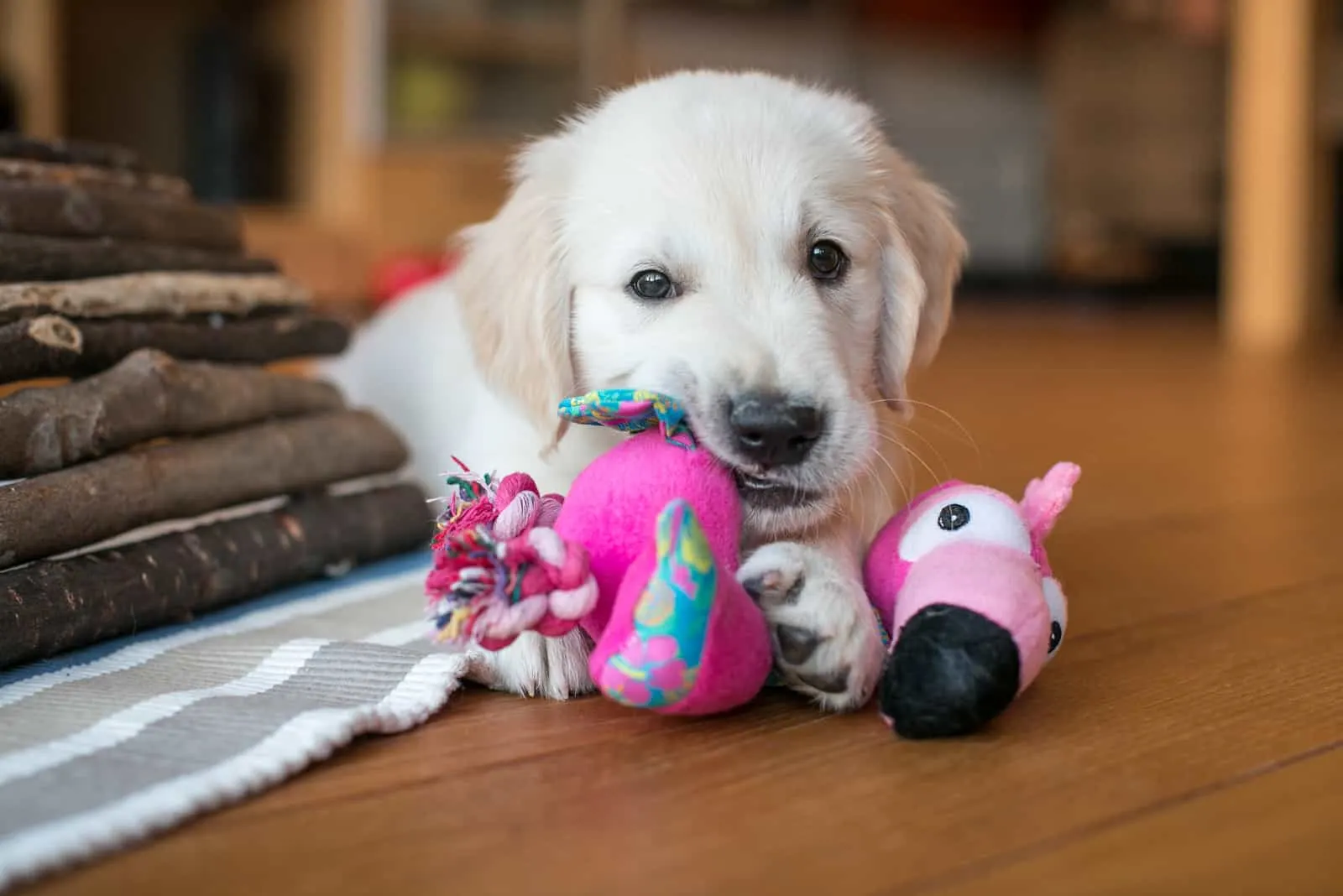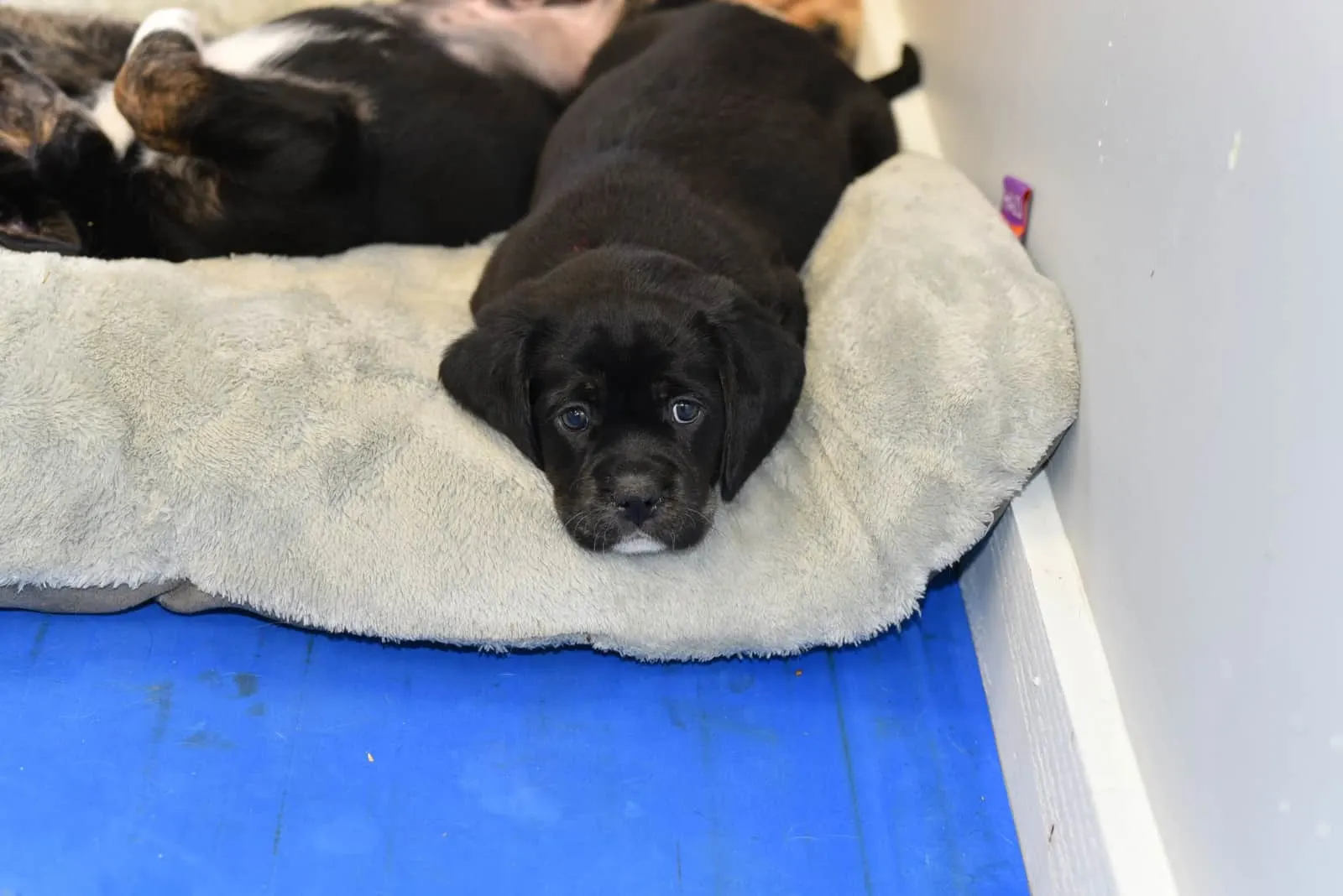Leaving Your Puppy Alone for the First Time: 12 Crucial Recommendations
You’ve recently welcomed a new puppy into your life, and the irresistible urge to cuddle with them all day long is undeniable. However, being a responsible dog owner involves more than just cuddles. In addition to providing a safe environment and proper care, you’re responsible for your puppy’s emotional, physical, and mental growth.
Think about the wide range of skills a young puppy must acquire, from basic commands and toilet training to socializing with other dogs and managing their aggression. Achieving all of this requires effective training and socialization.
Starting this journey with your new furry friend is thrilling, but leaving a puppy home alone for the first time can be challenging. How do you prepare your puppy for solo time, and what can you do to make the process smoother? Read on to explore practical tips that will simplify this transition.
Leaving Your Puppy Alone at Home for the First Time: How?
Leaving a puppy at home alone can be an emotionally challenging experience for both the puppy and the owner. Your departure might trigger whining and howling from your pup, and upon your return, you might find furniture in disarray due to anxiety-driven behaviors.
Why does this happen?
Dogs are inherently social creatures, spending time with their pack members from birth. They naturally seek attention, particularly during their vulnerable puppy phase. Consequently, dogs become accustomed to having someone close by and often struggle to understand why their beloved human is leaving them behind.
This situation can lead to separation anxiety, with varying degrees of distress. Some dogs will quickly adapt to occasional periods alone, while others might exhibit aggressive or destructive behaviors to communicate their loneliness.
Nevertheless, the situation is not irreparable. With timely intervention, you can teach your puppy to handle periods of solitude.
When Can You Start Leaving a New Puppy Alone?
The key to acclimating your puppy to being home alone is to begin early. You can start contemplating leaving your puppy alone at around eight weeks of age. However, start with very brief intervals initially.
For instance, on the first day, you could leave your puppy alone for just 10 to 15 minutes, ensuring you don’t stray too far away. Even being in the yard while your puppy is indoors can induce stress.
Since a very young puppy might not yet have full control over their bladder, be prepared for accidents. Gradually extend the duration of your absence day by day as your puppy becomes accustomed to the idea of being alone.
If your puppy starts to grasp that you will return after some time, you can gradually extend the time you leave them alone. After a few successful shorter intervals, you can begin leaving them alone for an hour or two.
Keep in mind that the amount of time your puppy can handle being alone largely depends on their age. An eight- to ten-week-old puppy should not be left alone for more than an hour. Between three and six months, they can manage around three hours without undue stress.
How Long Can a Puppy Be Left Alone?
The duration for which you leave your puppy alone is a significant consideration. For puppies aged six to twelve months, avoid leaving them alone for more than four hours. Adult dogs can tolerate up to eight hours, but it’s important to remember that they still need regular human interaction.
While a trained and socialized dog might seem independent, they still require meaningful interactions with their human family. Extended periods of separation can lead to behavioral problems and even foster aggression, albeit not necessarily aggressive behavior towards others.
The dog might not become aggressive in the traditional sense, but rather exhibit restlessness and discontent due to loneliness. While our lives can be busy, allocating quality time for your dog is essential to their well-being.
Recognizing a Happy Puppy Home Alone
Leaving your puppy alone at home for the first time inevitably raises concerns about their well-being without you. Some dog breeds adapt better to separation, whereas others might struggle, often influenced by age.
A stressed puppy may resort to destructive behaviors such as chewing on furniture or trying to escape. In contrast, a well-adjusted puppy will remain calm and content during your absence.
If your puppy cries excessively upon your departure, it can be distressing. However, it’s crucial to stay committed to your decision. With time, your puppy will understand that your absence is temporary, and you will return.
12 Helpful Tips for Leaving a Puppy Home Alone
Potty Training is Key: Ensure your puppy is potty trained before leaving them alone for longer periods. Begin with pee pads and establish a bathroom schedule. Expend Energy: Engage your puppy in vigorous activities before leaving. A tired puppy is more likely to rest during your absence. Quiet Departures: Avoid making a fuss when leaving. Sneak away during an engaging moment to minimize anxiety. Food and Water: Keep fresh water and a small amount of food accessible to your puppy. Multiple small meals are better than one large one. Puppy-Proof Your Home: Remove hazards, keep small objects out of reach, and secure power cables to prevent chewing. Provide Engaging Toys: Leave chew toys and puzzle toys to keep your puppy entertained. Background Noise: Leave a radio or soothing music playing to reduce external noises that might upset your puppy. Familiar Scent: Leave an old piece of clothing with your scent to comfort your puppy. Crate Comfort: If crate trained, ensure the crate is cozy with bedding. This provides a secure space for your puppy. Use a Pet Camera: A pet camera can help monitor your puppy’s behavior and provide peace of mind. Consider a Dog Walker: If your schedule permits, enlist a dog walker to provide companionship during your absence. Explore Doggie Daycare: For longer periods, consider a reputable doggie daycare to ensure your puppy’s socialization and mental stimulation. Addressing Your Puppy’s Cries
As you depart, your puppy’s cries can be distressing. However, returning immediately might reinforce this behavior. Over time, your puppy will learn that your departures are temporary, reducing their distress.
Parting Words
Navigating the process of leaving a puppy alone for the first time requires patience and proactive measures. While dogs naturally seek companionship, gradual desensitization can help them adjust to occasional solitude. With care and dedication, your puppy can develop a healthy understanding of separation, leading to a happier and more harmonious relationship.
